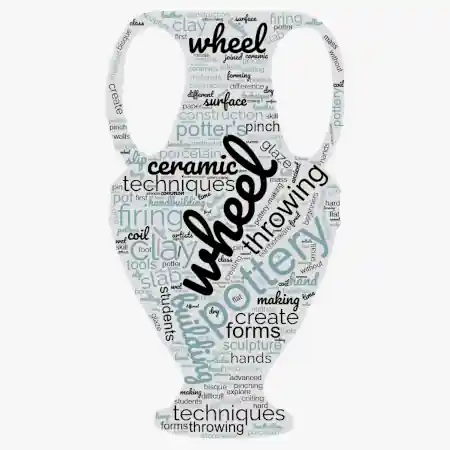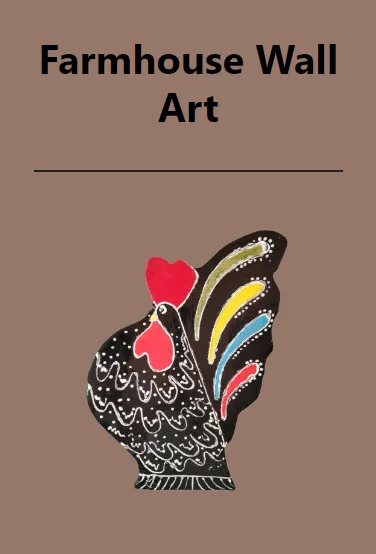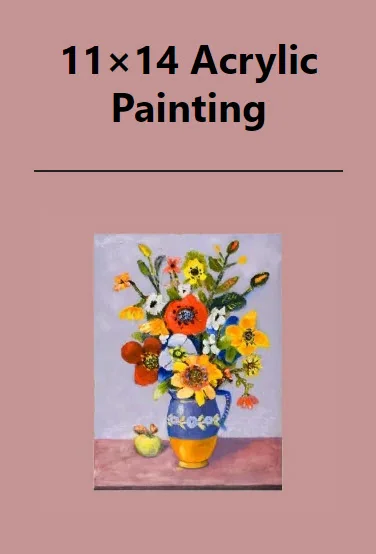There are many ways to form and shape clay bodies, turning them into a nice utilitarian piece or beautiful artwork. Most ceramic artists have their preferences whether to hand form or shape clay using wheel throwing. There is a big difference between the two methods. In this article, I’ll discuss the differences between hand building and wheel throwing.
Hand building and wheel throwing are two different methods of creating pottery. Handing building does not use a potter’s wheel whereas wheel throwing does. A potter centers a clay ball on a spinning wheel to form a clay pot on a potter’s wheel. While the wheel is spinning, clay is lifted and shaped. Wheel throwing is ideal for mass productions due to it’s easier to replicate a clay body.
What Is Wheel Throwing?
The practice of sculpting spherical ceramics on a potter’s wheel is known as wheel throwing. The wheels revolve continuously, either by foot or by motor, causing the clay and the pot to rotate, allowing you to sculpt it with your two hands.
Turning is a term used by some potters to describe their work at the potter’s wheel. Throw derives from the Old English word thrawan, which means to twist or turn.

What Is Hand Building?
Handbuilding is an old pottery-making technique that involves producing forms with hands, fingers, and rudimentary tools rather than a pottery wheel. Pinch pottery, coil building, and slab building are the most frequent handbuilding pottery techniques.
The potter’s wheel became popular in the Old World, but it was not used in the Pre-Columbian New World, where pottery was manufactured through coiling and bashing. Later ceramicists invented the pottery wheel. Before the invention of the potters wheel hand-building was the only way to create pots and ceramic art. Typically, it entails shaping clay on an electric or manual ‘wheel.’ The wheel’s centrifugal force enables potters to create vessels with greater precision and quality than other hand building processes, resulting in more refined and thinner vessels.
Coiling and bashing method when coiled pots are made by stacking and linking clay coils one on top of the other. The coils can be left exposed or smoothed out.
In my opinion, hand-building gives the artist or potter more flexibility. In most cases, when hand building, I will use a combination of techniques.
I can make almost anything with hand building. Not so with wheel throwing. I have a variety of options for creating clay bodies and objects I have imagined.
In my opinion, hand building, unlike throwing, is all about flexibility and mobility. I can create forms like flat surface or slabs and sculptures that are impossible to construct with wheel throwing. Many potters will use a rolling pin or slab roller to make a flat surface on the clay. Clay will be put between to runners of equal thickness and a rolling pin will be used to flatten the clay. The end result is a perfectly flat slab of clay. But trust, ha, it’s much easier said than done.
The downside of hand-building is it takes time, and it’s very difficult to duplicate things. This is why hand building is not used in the mass production of ceramic pottery or art. Artistic ceramic forms and ceramic sculpture is created by handbuilding. It’s all about creating forms without the use of a pottery wheel.
Using The Pinch Technique
Because you can knead the clay into a little lump, the Pinch technique is the simplest. By making a central section with your thumb, you may open the pinch pot. Pinch the middle to make it bigger. Depending on the situation, make the walls thicker or narrower. This technique is controlled by the potter’s hands.
Coiling Construction Technique
The Coiling construction technique was used to make ceramics by Native Americans in New Mexico, Greeks, Chinese, and people from Africa. To begin, create a pencil-thick cylinder. Cylinders are then stacked or joined together forming a vessel or pot. The biggest problem with the coiling method is it’s difficult to get the cylinder to a consistent thickness. Coiling is the most flexible method in pottery, according to experts.
Slab Construction Technique
The slab construction approach necessitates the most expertise, and it is particularly useful for making items at angles. Slab construction produces many of the same designs as wheel construction, but it varies in that you have considerable control over the finished product by bending the slabs into shape. With slab building, you can make more angular designs than with a pottery wheel.
What Is a Potter’s Wheel?
A potter’s wheel is a mechanism used to shape circular ceramic ware known as throwing in pottery. The wheel can also be used to reduce the surplus body from curved ceramics and to apply incised decoration or color rings.
Potter’s Lathe
A “potter’s lathe” is a term used to describe a potter’s wheel. However, that name is more appropriately applied to a different type of machine that is used for a different type of shaping operation, turning, which is analogous to the shaping of metal and wooden objects.
Jiggering and jolleying
Jiggering and jolleying are two processes that might be thought of as extensions of the potter’s wheel: in jiggering, a forming tool is gently brought down upon a plastic clay body that has been placed on top of a revolving plaster mold.
One face is shaped by the jigger tool, while the other is shaped by the mold. The phrase refers to the shaping of flatware, such as plates, whereas jolleying, a similar technique, is used to make hollowware, such as cups.
Pots can be made quickly on a wheel, and it’s easy to duplicate an item. As a result, it is suggested for mass production. Throwing allows you to create larger cylindrical objects. Everything you make using wheel throwing will be spherical. You’ll need to employ hand-building techniques at some point if you want to change forms or add other objects, and decorate after throwing.
Wheel Throwing Versus Hand Building Costs
This is actually a hard question because it’s going to be dependent on what tools you buy. But I guess in the end wheel throwing is going to be more expensive because you have to have a pottery wheel whereas hand-building does not require and motorized or special tools.
Consider the price, but don’t forget about the type of pottery you’ll be making. Consider which wheel would be ideal for the job at hand. The cheapest pottery wheels are tabletop pottery wheels, however, they don’t provide as much workspace and they limit you to the size of the pottery you can create.
Another pricing difference is that motorized pottery wheels are usually more expensive than non-powered pottery wheels, also known as kick wheels, that are propelled by your feet.
Wheel Throwing Costs
A potter’s wheel typically costs anywhere from $200 on the cheap side to $2,000 or more. Most cheap pottery wheels are small and really designed for beginners, in my opinion. They are suitable for forming and shaping small bowls, cups, and pots. The head plate diameter is usually less than 10 inches or 25 cm.
Because you don’t have to pay for a wheel, you might start with hand building. And as your technique develops, you can convert to wheel throwing.
Hand Building Costs
Many beginners find hand-building easier because they have more control over the clay and cheaper because no potter’s wheel is needed. Hand building involves the use of only your hands, fingers, and a few simple tools to create your creations. But really, you do not even need special tools. Most all the tools I have are from common household objects that I have taken and are used in other ways than originally intended. So I am living proof you really don’t need to spend anything on special tools.
But if you want to purchase some basic tools, you can get a clay tool set for less than $30. A set usually contains sculpting tools, double-sided carving tools, and even a bag or carrying case if you want.
Is Wheel Throwing Difficult?
A great instructor can make the process of making pottery appear straightforward, but a beginner should not anticipate it to be so simple at first. Throwing on a potter’s wheel on average takes between 1 to 5 hours of lessons or instruction and 1 to 2 hours of practice to create a simple pot and learn the basics. At this point the skill level is low and doesn’t mean you are any good. You will have a good idea of the basics. A willing protegé will become adept at demonstrating the techniques presented to them with practice. After the first lesson its best to explore on your own what you can do and learn by doing. Advanced students will typically have well over 22 hours of actual clay working time and at least 1 to 2 more hours of class time under their belt.
Choosing Wheel Throwing Clay
You’ll need good plastic clay for wheel throwing. When your wheel throwing, you’ll use a lot more water than when your hand building. This is because more water makes the clay easier to work with on the wheel.
Because of its pliable and workable, potters frequently use Porcelain or Stoneware at the wheel. Keep in mind that the more plastic clay you use, the more it shrinks. When you put it in the kiln, you run the risk of it warping and shrinkage.
Note some clays perform well for wheel throwing but are unsuitable for hand-building techniques. Earthenware or Stoneware clays with grog for less shrinkage, better stability, and less breaking after drying are the ideal clays for hand-building.
Because of the difficulties, I don’t recommend using porcelain with hand-building techniques. While porcelain can be used in hand construction, it takes a lot of practice to get it right. The hand-building technique works well with any clay that contains grog or fiber, such as paper clay.
Because of its plasticity and suppleness, porcelain is preferable to the expert. Kaolin is sometimes combined with other clays by potters to make it more elastic.
Another advantage of stoneware over porcelain is that it is more forgiving and less expensive. Stoneware can also be used in wheel throwing.
Differences Between Hand Building And Wheel Throwing
Pottery can be made in two ways: by hand or by throwing it on a wheel. Wheel throwing uses a potter’s wheel, whereas hand-building does not. On a potter’s wheel, a potter centers a clay ball on a spinning wheel to produce a clay pot. Clay is lifted and sculpted as the wheel is rotating. Because it’s easy to recreate a clay body using wheel throwing, it’s perfect for mass production.
Basically, while making something out of clay, you’ll nearly always employ a combination of building methods, whether for speed, aesthetics, or personal preference.
It all depends on what you want to make and which method is best for your personality and style. Because pottery is all about expressing oneself, there is no right or wrong way to do so.
References
Jeffra, C. D. (2011). The archaeological study of innovation: an experimental approach to the pottery wheel in Bronze Age Crete and Cyprus (Doctoral dissertation, University of Exeter). https://ethos.bl.uk/OrderDetails.do?uin=uk.bl.ethos.548624
Thér, R., Květina, P., & Neumannová, K. (2019). Coiling or slab building: Potential of orientation analysis for identification of forming techniques used by Early Neolithic potters. Journal of Archaeological Science: Reports, 26, 101877. sciencedirect.com/science/article/abs/pii/S2352409X18306552
Vincentelli, M. (2005). Gender, Pottery Technology and Development Project. Interpreting Ceramics, 6.





